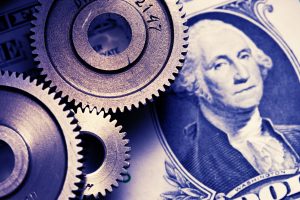The US Economy in Two Words: Asymmetric Gains
The comments below are an edited and abridged synopsis of an article by Charles Hugh Smith
“The Status Quo is in trouble if the bottom 95% wake up to the asymmetric gains that are the only possible output of our hyper-financialized economy.”
 The core dynamic of the US economy in this era is asymmetric gains. The status quo must paper over this widening gulf with narratives that no longer match reality.
The core dynamic of the US economy in this era is asymmetric gains. The status quo must paper over this widening gulf with narratives that no longer match reality.
The US economy has changed, but the transformation is largely invisible to the average participant and conventional economist.
Stocks and bonds were destroyed in the 1970s; the 1980s ushered in a new economy based on financial magic. We now have a hyper-financialized economy in which the only way to get ahead is to speculate.
Entrepreneurs seek to generate value only as a means of cashing out via an initial public offering or selling their company to a global corporation.
In a hyper-financialized economy, hype is the most valuable skill, and future income is pulled into the present and monetized to benefit the top dogs.
The majority of gains reaped since the 2008-09 financial meltdown have flowed to the top 0.1%. This is not a bug, it is a feature of hyper-financialization. Indeed, it is the only possible output of the current system.
Meanwhile, the bottom 95% live in an economy where wages go nowhere, and costs are soaring. The financial media cheers when wages (supposedly) rise by 2%, but nobody dares measure the effect of rising costs in services such as healthcare and higher education.
So the status quo is in trouble. Hype and propaganda are the key tools of the present era, as these are required to disconnect perception from reality. How long the disconnect will last is anyone’s guess, but when they reconnect, all that is solid now will melt into thin air.
